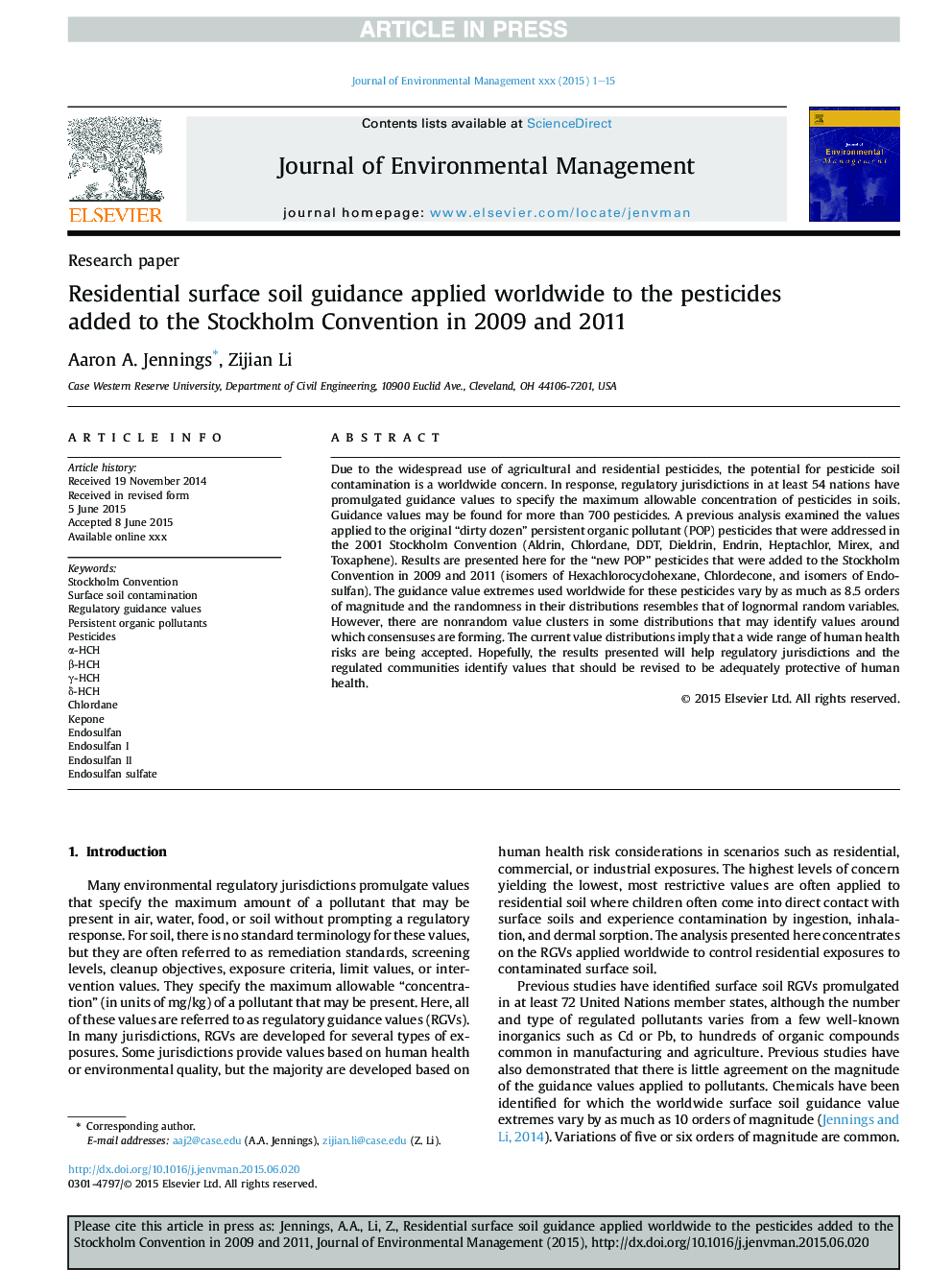| Article ID | Journal | Published Year | Pages | File Type |
|---|---|---|---|---|
| 7481834 | Journal of Environmental Management | 2015 | 15 Pages |
Abstract
Due to the widespread use of agricultural and residential pesticides, the potential for pesticide soil contamination is a worldwide concern. In response, regulatory jurisdictions in at least 54 nations have promulgated guidance values to specify the maximum allowable concentration of pesticides in soils. Guidance values may be found for more than 700 pesticides. A previous analysis examined the values applied to the original “dirty dozen” persistent organic pollutant (POP) pesticides that were addressed in the 2001 Stockholm Convention (Aldrin, Chlordane, DDT, Dieldrin, Endrin, Heptachlor, Mirex, and Toxaphene). Results are presented here for the “new POP” pesticides that were added to the Stockholm Convention in 2009 and 2011 (isomers of Hexachlorocyclohexane, Chlordecone, and isomers of Endosulfan). The guidance value extremes used worldwide for these pesticides vary by as much as 8.5 orders of magnitude and the randomness in their distributions resembles that of lognormal random variables. However, there are nonrandom value clusters in some distributions that may identify values around which consensuses are forming. The current value distributions imply that a wide range of human health risks are being accepted. Hopefully, the results presented will help regulatory jurisdictions and the regulated communities identify values that should be revised to be adequately protective of human health.
Keywords
Related Topics
Physical Sciences and Engineering
Energy
Renewable Energy, Sustainability and the Environment
Authors
Aaron A. Jennings, Zijian Li,
